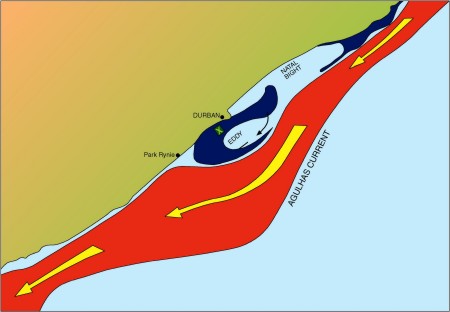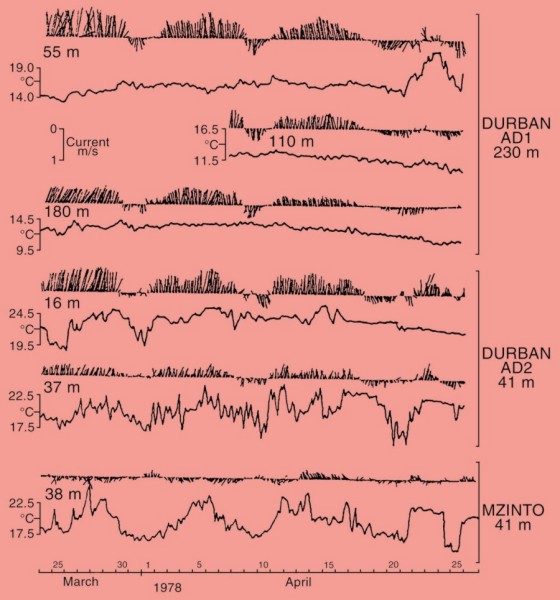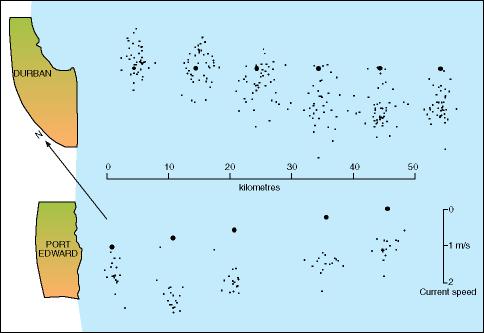Durban Cyclonic Gyre
Dowload the PDF of this lesson by clicking here
 |
North of Cape St Lucia and south of Durban, the continental shelf is very narrow. Between these two locations it widens to approximately 45 km. The Agulhas Current flows swiftly along the continental margin, and influences the shelf waters. On the broader shelf between Durban and Richards Bay, the shelf currents are dominantly north-easterly. The shelf ecosystems rely on two eddies for nutrients, one, which is found in the lee of Cape St Lucia and the other, which is formed south of Durban where the shelf narrows (referred to as the Durban cyclonic gyre). Little is known about this eddy, except that it lifts nutrients to shallower depths. Aliwal Shoal, a major reef system,is positioned adjacent to this eddy. |
|
Figure 1 |
 |
Current meters deployed off Durban show mainly northward flowing currents (refer to Figure 2), which corroborates with Figure 3 (Schumann, 1988). By contrast, the southern region is strongly influenced by the Agulhas Current due to the very narrow shelf (refer to Fig. 3). The current at Port Edward is constantly southward. |
|
Figure 2 |
 |
|
|
Figure 2 |
CLASSIC PAPER
Schumann, E. H. (1988). Physical oceanography off Natal. In: E.H. Schumann, (Ed.), Lecture Notes on Coastal and Estuarine Studies. Springer-Verlag, New York, pp. 101-130
Bibliography
- Lutjeharms, J. R. E. and Connell, A. D. (1989). The Natal Pulse and inshore counter-currents off the South African east coast. South African Journal of Science, 85, 533-535.
- Lutjeharms, J. R. E., Valentine, H. R. and Van Ballegooyen, R.C. (2000). The hydrography and water masses of the Natal Bight, South Africa. Continental Shelf Research, 20,1907-1939.



